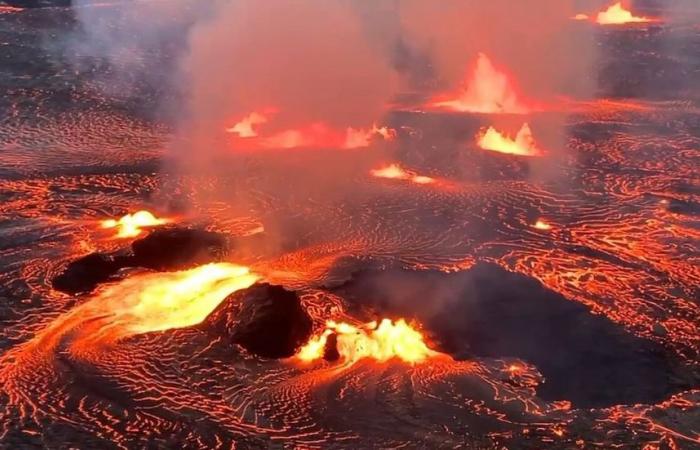Stomp rockets are supposed to be fun. Discovering that volcanic eruptions can go off like a rocket… well… it’s not that fun. Research into the 2018 Kilauea eruption – a series of 12 consecutive eruptions in Hawaii – shows that it not only fell outside the norm when it comes to volcanic eruptions, but may have created its own category.
A typical volcanic eruption involves the rise of magma, the evaporation of groundwater, or a combination of both to create an explosion. But the Hawaiian eruption doesn’t fit into any of these scenarios. In a research paper published in Nature Geoscience, a group of researchers discovered that a new category exists. This is the “stomp rocket” eruption.
“The ‘stomp’ is this whole kilometer-thick chunk of rock that falls down, presses on the bag, and then forces the material straight up,” Josh Crozier, the lead researcher working on the project, explained in a statement. earns a doctorate from the University of Oregon. The rocket part was the eruption of gas and rock from the volcano. Twelve times.
Crozier explained that the scientific intrigue arose when data showed that the eruptive material contained very little fresh magma. As researchers studied the situation – a process known as “hindcasting” in the volcanic world – there was also no evidence of significant groundwater at the volcanic event. And with the U.S. Geological Survey’s Hawaiian Volcano Observatory covering Kilauea with scientific instruments, there was plenty of data to mine.
“What’s interesting about these eruptions is that they occurred in a very similar sequence, which is relatively unusual,” explains Leif Karlstrom, a volcanologist at the University of Oregon.
All this data allowed us to get a fairly precise idea of what was happening inside Kilauea. The team said that before each summit explosion, magma slowly drained from an underground reservoir, feeding lava flows up to 24 miles away. As the reservoir was depleted, the ground around it – the crater inside the caldera at the top of the volcano – suddenly collapsed.
The collapse caused the reservoir’s pressure to rise, pushing a pocket of magmatic gas and debris at the top of the reservoir out of a vent in Kilauea’s crater. That’s where the toy rocket analogy comes into play. The downward-falling rock created a pressurized pocket that drove pressure through a 10-kilometer underground tunnel and forced debris and gaseous material upward.
Scientists note that although this is the first time they have observed such an eruption, caldera collapse is so common that it is likely to occur elsewhere.
“This points to new ways of observing eruptions and combining sensor measurements with computer simulations to better assess the dangers of eruptions,” said Joe Dufek, a volcanologist at the University of Oregon.
It also provides a new way to look at a popular children’s toy.
Tim Newcomb is a journalist based in the Pacific Northwest. He covers stadiums, sneakers, gear, infrastructure, and more for a variety of publications, including Popular Mechanics. His favorite interviews have included sit-downs with Roger Federer in Switzerland, Kobe Bryant in Los Angeles, and Tinker Hatfield in Portland.







